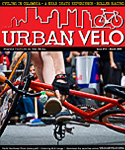3.2 Million people a day can't be wrong.
NYC Subways carries 1.1 million riders a day and the Bus System does another 2 Million per day!!
Mass transit use and car ownership
New York City is distinguished from other cities in the United States by its significant use of public transportation. New York City has, by far, the highest rate of public transportation use of any American city, with 54.2% of workers commuting to work by this means in 2006.[4] About one in every three users of mass transit in the United States and two-thirds of the nation's rail riders live in New York City or its suburbs.[5] New York is the only city in the United States where over half of all households do not own a car (Manhattan's non-ownership is even higher - around 75%; nationally, the rate is 8%).[6]
New York City also has the longest mean travel time for commuters (39 minutes) among major U.S. cities.[4]
[edit]Environmental and social issues
New York City's uniquely high rate of public transit use makes it one of the most energy-efficient cities in the United States. Gasoline consumption in the city today is at the rate of the national average in the 1920s.[7] New York City's high rate of transit use saved 1.8 billion gallons of oil in 2006 and $4.6 billion in gasoline costs. New York saves half of all the oil saved by transit nationwide.
The reduction in oil consumption meant 11.8 million metric tons of carbon dioxide pollution was kept out of the air.[8] The New York City metro area was ranked by the Brookings Institution as the U.S. metro area with the lowest per-capita transportation-related carbon footprint and as the fourth lowest overall per-capita carbon footprint in 2005 among the 100 largest metro areas of the United States, outranked only by Honolulu, Los Angeles and Portland.[9]
The city's transportation system, and the population density it makes possible, also have other effects. Scientists at Columbia University examined data from 13,102 adults in the city's five boroughs and identified correlations between New York's built environment and public health. New Yorkers residing in densely populated, pedestrian-friendly areas have significantly lower body mass index (BMI) levels compared to other New Yorkers. Three characteristics of the city environment—living in areas with mixed residential and commercial uses, living near bus and subway stops and living in population-dense areas—were found to be inversely associated with BMI levels.[10]
See also: Environmental issues in New York City
[edit]Commuting/modal split
Of all people who commute to work in New York City, 32% use the subway, 25% drive alone, 14% take the bus, 8% travel by commuter rail, 8% walk to work, 6% carpool, 1% use a taxi, 0.4% ride their bicycle to work, and 0.4% travel by ferry.[11] 54% of households in New York City do not own a car, and rely on public transportation.[12] While the so-called car culture dominates in most American cities, mass transit has a defining influence on New York life. The subway is a popular location for politicians to meet voters during elections and is also a major venue for musicians. Each week, more than 100 musicians and ensembles – ranging in genre from classical to Cajun, bluegrass, African, South American and jazz – give over 150 performances sanctioned by New York City Transit at 25 locations throughout the subway system.[13]













0 comments:
Post a Comment